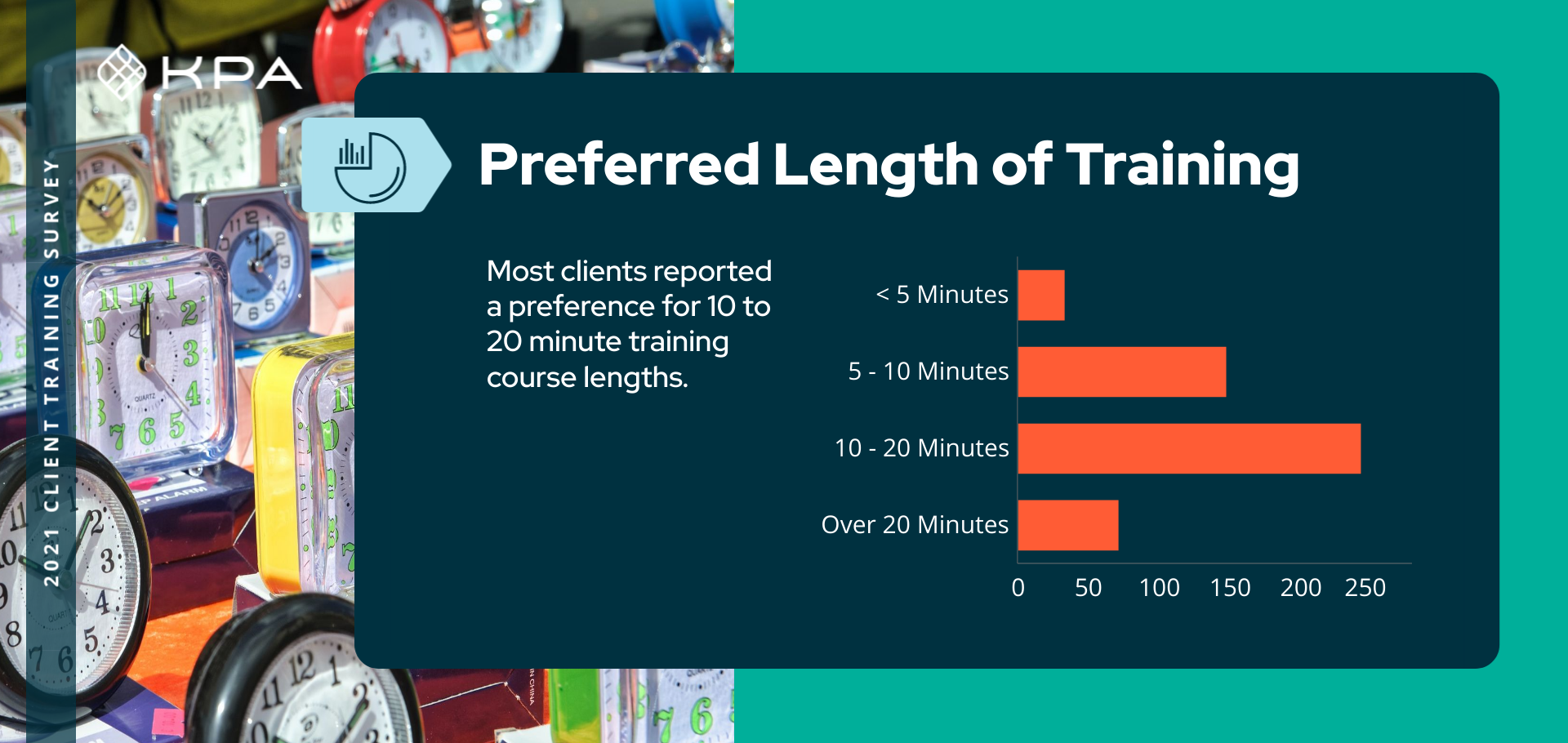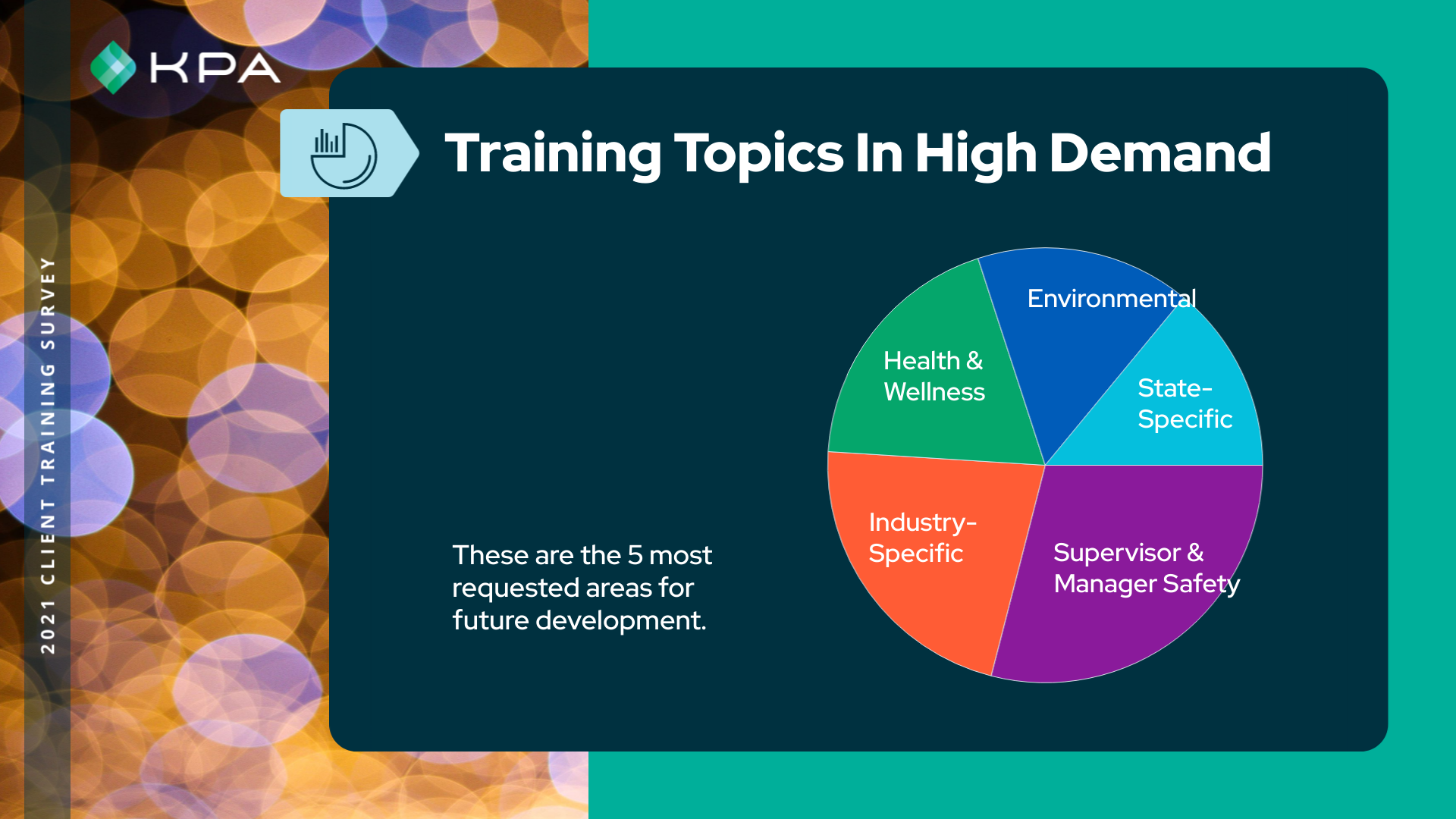We polled our user base to get a feel for what safety and training managers want to see from their EHS and HR Training Courses in the future. Let’s dive deep into this data and discover the future of Safety and Training Programs.
We are paying attention to what training courses companies are using and what they wish they had access to within their training programs. We have gathered data across industries to get a snapshot of current workplace safety and compliance training course uses, what leaders are looking to get out of their training programs, and what we see for the future of EHS and HR training.
The data used in this report was gathered through a study conducted by KPA in Fall 2021. We polled users across our Vera Suite, Risk Management Center, KPA EHS, and Subscription to Safety products. Six hundred sixty-five users participated in the study.
You can grab your own copy of the study results here.
Or, even better, listen to the head of our training team discuss the survey results in detail.

Preferred Length of Training
Most users prefer a 10 to 20-minute training course length, long enough to deliver as much information as possible while still being brief enough to hold the attention of those participating. The runner-up for the most popular length is 5 to 10 minutes, for a shorter and sweeter course.
We also asked our clients what they were looking for in future topics. Here’s what they’re looking for:

5 Future Trends in Training
Supervisor and Manager Safety: We all know that team member safety training must be well-enforced by leadership teams, but who ensures that the people in charge stay safe? Supervisor and Manager Safety training courses help keep leadership up-to-date on protocols to keep themselves and their teams safe.
Industry-Specific: While many training courses apply to all industries, some training programs require industry-specific knowledge and applications. Industry-specific training is a great way to cover the training topics that target your workforce’s specific responsibilities, equipment, and skillsets.
Health and Wellness: Along with standard illness prevention, companies are starting to place a greater focus on the general well-being of their workers. Health and Wellness training addresses topics like mental health, mindfulness, and stress relief.
Environmental: Workplace environments can dramatically impact the level of potential safety concerns and hazards for employees. Environmental training courses are designed to keep workers informed on safety procedures related to their workplace environment.
State-Specific: Although plenty of training programs can be used in any state, there are benefits to using state-specific courses that incorporate the regulations, environmental factors, and other particularities of a specific location.
What’s Next?
KPA’s training team takes this annual data to inform their strategy for the upcoming year. Be on the lookout for a wider range of training lengths, and new training topics that reflect our clients’ needs.
Ensure Safety and Improve Productivity with Award-Winning Training by KPA
KPA offers award-winning training courses designed to help employees improve their performance on the job. Scenario-based learning modules educate learners on the laws and regulations that apply to their jobs. Our courses feature high-level interactivity and video-based content designed to hold learners’ interest and keep them engaged.
KPA’s training team has developed an extensive library of training courses to meet your needs.


